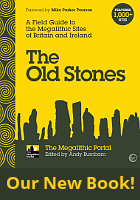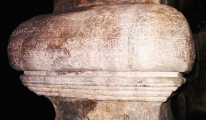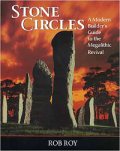<< Feature Articles >> The Great Stone Circles – How they Work - Interlinked Contents Page
Submitted by TimPrevett on Monday, 31 July 2006 Page Views: 5592
Alternative Archaeology
The Great Stone Circles – How they Work - Contents
Part 1 - Research at Swinside
Part 2 - Methods Old and New
Part 3a - The Calendar Systems - Swinside
Part 3b - Other Calendar Systems
Part 4 - The Summer Solstice at Stonehenge
Part 5a - Shape of Stones - Part 1
Part 5b - Shape of Stones - Part 2
Part 6a - The Moon Cycles
Part 6b - The Moon Cycles - Swinside Moon Northern Rise
Part 6c - The Moon Cycles - Swinside Moon Northern Set
Part 7 - Castlerigg - The Sanctuary and the Moon
Part 8 - The location of Swinside
Part 9 - Prediction Sites
Part 10 - Glaciers
Part 11 - The Standing Stones, Kirksanton
Part 12 - Finding the focal point of the circle
Part 13 - The Orientation of Stonehenge
Part 14 - Midwinter Solstice - Comparing four circles
Jack Morris-Eyton sadly passed away in 2011 but his expanded research has been posthumously published in a book: Stone Circle Calendars: A New Understanding.
Note: In 2005 we were treated to a fascinating series of articles from JACKME; here is a reminder, and interlinked contents page for the whole series of Jack's articles.






 We would like to know more about this location. Please feel free to add a brief description and any relevant information in your own language.
We would like to know more about this location. Please feel free to add a brief description and any relevant information in your own language. Wir möchten mehr über diese Stätte erfahren. Bitte zögern Sie nicht, eine kurze Beschreibung und relevante Informationen in Deutsch hinzuzufügen.
Wir möchten mehr über diese Stätte erfahren. Bitte zögern Sie nicht, eine kurze Beschreibung und relevante Informationen in Deutsch hinzuzufügen. Nous aimerions en savoir encore un peu sur les lieux. S'il vous plaît n'hesitez pas à ajouter une courte description et tous les renseignements pertinents dans votre propre langue.
Nous aimerions en savoir encore un peu sur les lieux. S'il vous plaît n'hesitez pas à ajouter une courte description et tous les renseignements pertinents dans votre propre langue. Quisieramos informarnos un poco más de las lugares. No dude en añadir una breve descripción y otros datos relevantes en su propio idioma.
Quisieramos informarnos un poco más de las lugares. No dude en añadir una breve descripción y otros datos relevantes en su propio idioma.